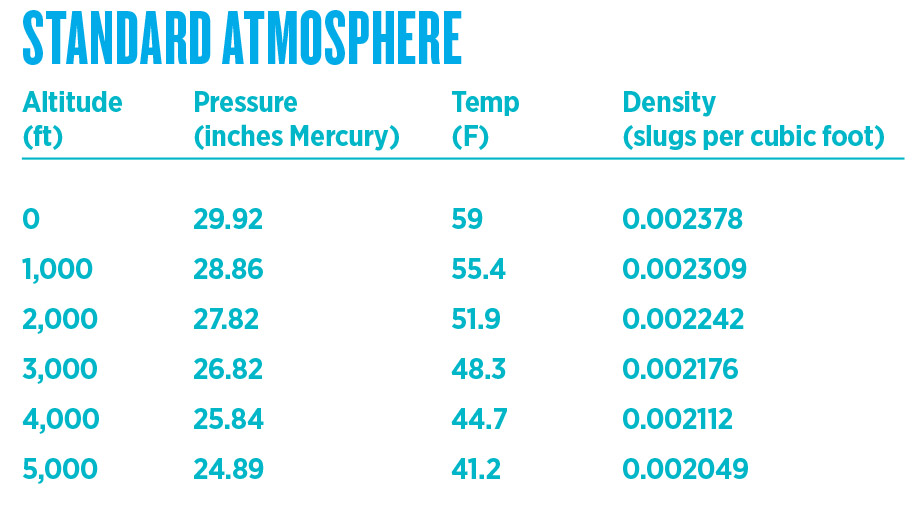
In warm weather, pilots need to turn their attention to how the air’s temperature affects airplanes—especially airplanes as they are taking off.
Density refers to the number of molecules of the gases that make up the air. It is expressed in terms of slugs per cubic foot of air (or kilograms per cubic meter in the metric system). As the air’s density decreases, an engine produces less power (a turbocharger mitigates this, up to a point), a propeller or jet produces less thrust, and lift decreases. Drag also decreases, but not nearly enough to make up for the other losses.
Thinner air reduces engine power because it has fewer molecules of all kinds, including oxygen that combines with fuel to produce power. Lift and thrust are reduced because fewer molecules per second are flowing around the wings to lift them, or around the propeller to push it forward.
Air, like anything else, expands as it heats up, which means that a cubic foot of hot air has fewer molecules—that is, it’s less dense—than a cubic foot of cooler air. And as we go higher in the atmosphere, the air becomes less dense because there is less air above us squeezing down on the air where we’re flying. Heat and height (temperature and altitude) are the two factors that aviators commonly use when calculating air density.
In aviation, the concept of density altitude is the most common way of describing the effects of air density on performance. A pilot might say: “With today’s high density altitude, we’re going to use all of the runway.”
What?
In brief, high density altitude means that the air’s density is equivalent to the average air density at a higher altitude in the standard atmosphere. A standard atmosphere is a listing of values for the temperature, pressure, air density, viscosity, and other properties of the atmosphere at given altitudes. The standard atmosphere at sea level has a temperature of 59 degrees Fahrenheit or 15 degrees Celsius, and a pressure of 29.92 inches of mercury or 1013.2 millibars. Air density is 0.002378 slugs per cubic foot (1.23 kilograms per cubic meter). A temperature of 90 degrees F makes the air much less dense, causing the aircraft to “feel” as if it is thousands of feet higher. So even if you’re not flying in the mountains, air density could affect your aircraft performance—particularly in the summer months.



